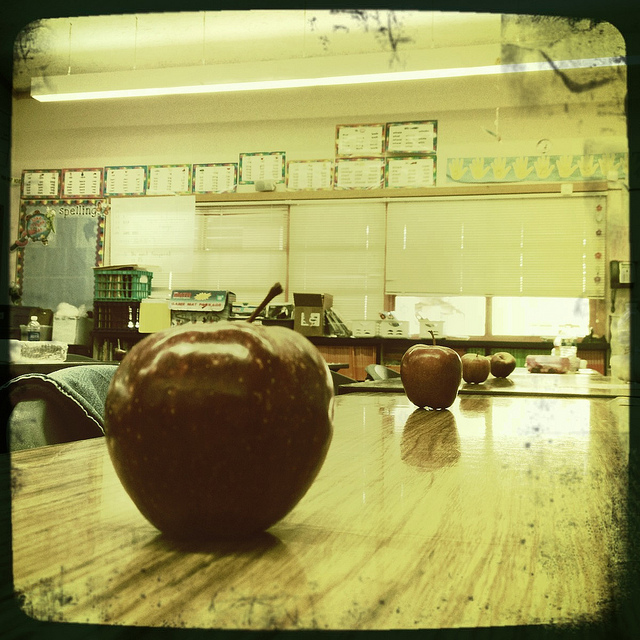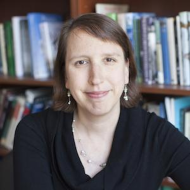
You might think that an official science teacher meeting would be the last place you’d run into climate change deniers. Sadly, that’s exactly what I found three years ago when I attended my first California Science Teachers Association (CSTA) meeting in San Jose. What happened that day was pretty shocking, but it spurred me, and all the science-loving members of CSTA, to action. Now no one can argue that California science teachers are anything but crystal clear about the overwhelming scientific evidence for anthropogenic climate change.
I had just started at NCSE, and I was pretty new to climate change education, so I was thrilled to see a lone workshop on teaching climate change in physics classes. As a biologist I was familiar with the many ways that climate change could be covered in a biology class, and of course climate change is a natural fit for earth science. But teaching about the physics of climate change? This was going to be cool.
But, unfortunately it was not cool. It was anything but cool. It was in fact, outright uncool. Rather than, say, showing how physics teachers could use climate change to ground their teaching of thermodynamics in real world examples, the workshop was focused on how to cast doubt. The two presenters suggested engaging students in “critical thinking” exercises—by which they meant encouraging students to “debate” whether solar activity or humans were responsible for climate change. As educators, they proudly announced, they “took no position” on the science when presenting the material and let the students hash it out themselves. Bad enough that these teachers thought it appropriate to ask high school students to decipher complex concepts like solar activity without any guidance whatsoever. Even worse, it became quickly apparent that these presenters actually did take a position on the science, and that position was, um, not in support of the science.
In my conversations with them afterwards it became clear that they were distrustful of scientists (one of them explicitly told me that she was certain they were falsifying data) and they were certain that climate change was a hoax. They also told me that in conservative communities, teaching the science of climate change was a non-starter, so by misrepresenting the science, they were able to address the topic.
I am embarrassed to say that I was not particularly polite to these two presenters, which bothers me now because I should have known that simply yelling at people doesn’t change their minds. What I did next though was much more effective: I ran for a position on the board of directors for CSTA. And I won! If you are a teacher in the Bay area, I’m your regional director—nice to meet you! But the next thing I did was far more important: I worked with other California educators to get CSTA to write a position statement on climate change education (just adopted this month!)
You may be wondering about position statements. Aren’t these just boring documents that bureaucrats can point to as they collect dust in the corner? Well, not if they are done right.
CSTA, like many other educational organizations, already had a position statement on teaching evolution—which has been a powerful document to point to when creationists have attempted to undermine education within the state. By stating publically that evolution education is central to a life sciences education, CSTA is telling creationists that they are not welcome at CSTA's science teacher conferences. It also tells school boards across the state that attempts to bring creationist materials into their districts will never be acceptable to the science teachers in our state.
A statement on climate change education serves the same important purpose. How powerful would it have been three years ago if I’d been able to say to the two denialist presenters that they were in disagreement with every science teacher in the state, not to mention the organization at whose meeting they were presenting? The power is in the numbers. And in this case, the power is in the number of teachers. Just as with evolution, science teachers have once again spoken in California, and as expected they are on the side of science.
I am thrilled to be returning to CSTA’s conference at the end of this week where there are several presentations on climate change science. I’ll be there doing two of the presentations, one featuring the National Climate Assessment, the other featuring former NCSE staffer Mark McCaffrey’s book Climate Smart & Energy Wise. But there will be more: a presentation on climate change and redwoods, another on using climate proxies, and a third on climate modeling and STEM careers. There is even one on climate change chemistry—awesome!
In the three years since I started at NCSE, climate change education has advanced by leaps and bounds. Educators are working hard to make sure that their students are getting the best and most up to date science. It’s an exciting time to be in climate change education, as the changes that we see in the classroom now will empower students for the rest of their lives. And it won’t be a “debate”, as those presenters from three years ago hoped. These students will be getting the science, the whole science, and nothing but the science.
Photo from BeInspiredDesigns via Flickr

